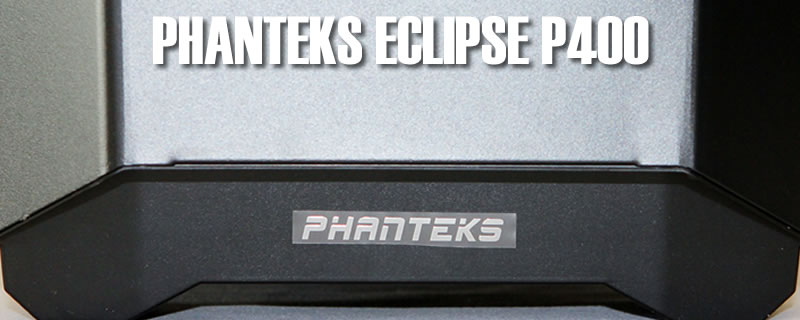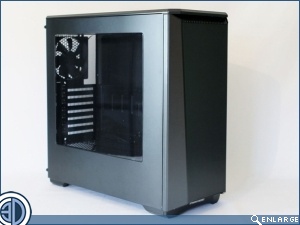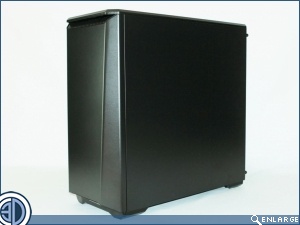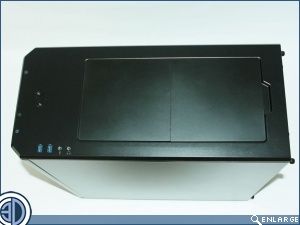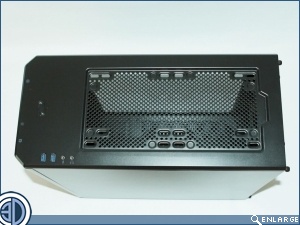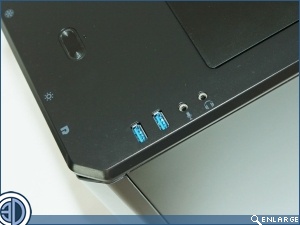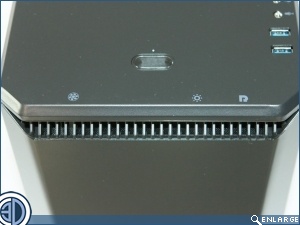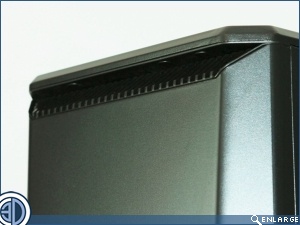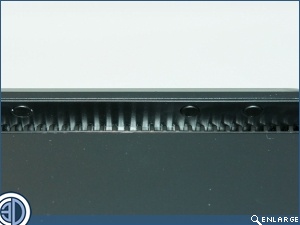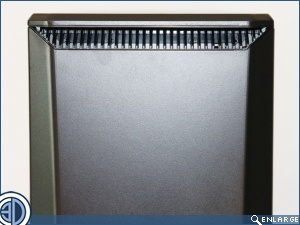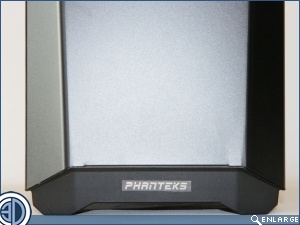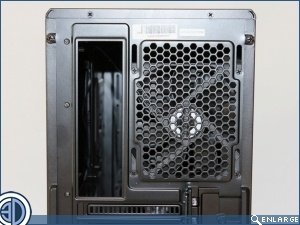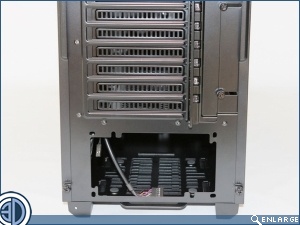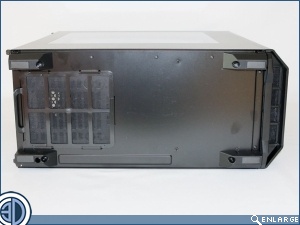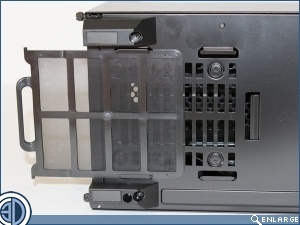Phanteks Eclipse P400 Review
Up Close: Â Exterior
The P400 is available in three colours, White, Grey, and the Black that we have here.  It’s also available without sound deadening for about £5 less.  Like the other Phanteks cases we have looked and in particular the Enthoo ATX the P400 has a full width window.  Unlike the Enthoo ATX though the window does not extend downwards anteriorly so as to give a view of the false floor area and part of the PSU.  This in our opinion is no bad thing as to be honest we didn’t think it really worked that well as a design.  The case itself looks almost square to the eye and is pretty smooth other than the front panel which has an aesthetically pleasing angled bulge.  We think this thing’s going to look pretty hot in white.
Â
The roof of the case has a large mesh panel with slots for fans and hopefully rads to be mounted. Â the mounts for 140s seem pretty central, but the 120s do seem off to the side so as to throw things clear of the motherboard, although, it does appear to be only 20mm. Â If not in use these slots can be covered with magnetic panels, with Phanteks also supplying magnetic dust filters if so required.
Â
The I/O is positioned towards the front of the case on the right hand corner and consists of a pair of USB 3.0s and a pair of Audio sockets. Â The power switch is positioned centrally to the front of the case and is surrounded by an RGB LED ring that illuminates when the case is powered. Â This LED and an LED strip at the bottom of the case can be controlled directly from the case or by compatible motherboards such as the Asus boards with AURA support and headers. Â But hang on a minute, we can see the symbols for the fan speed and LED control etc, but where the hell are the actual buttons. Â Well at first we thought they might be touch sensitive symbols, but in fact although they’re not we do really like the solution.
Â
You see the buttons are actually hidden under the lip at the front edge of the case and are amazingly ergonomic to use, your hand just seems to fall right to them. Â They’re short travel with multiple presses resulting in the lights or fans stepping though their cycles. Â nice one Phanteks
Â
The rest of the case front is pleasingly feature free save for a discrete Phanteks logo secreted under the bottom lip. Â It’s from under this bottom lip that the internal LED strip casts its light.Â
Â
The rear of the case is a pretty standard ATX layout, although the PCI slot covers do benefit from a double clamping mechanism. Â Additionally, the 120mm fan grill is slotted to enable the fan to be moved vertically.
Â
The underside of the case is nice and clean save for the large filtered PSU cut out at the rear. Â The case stands on four large plastic feet, with each one being capped with a dense rubber pad.



